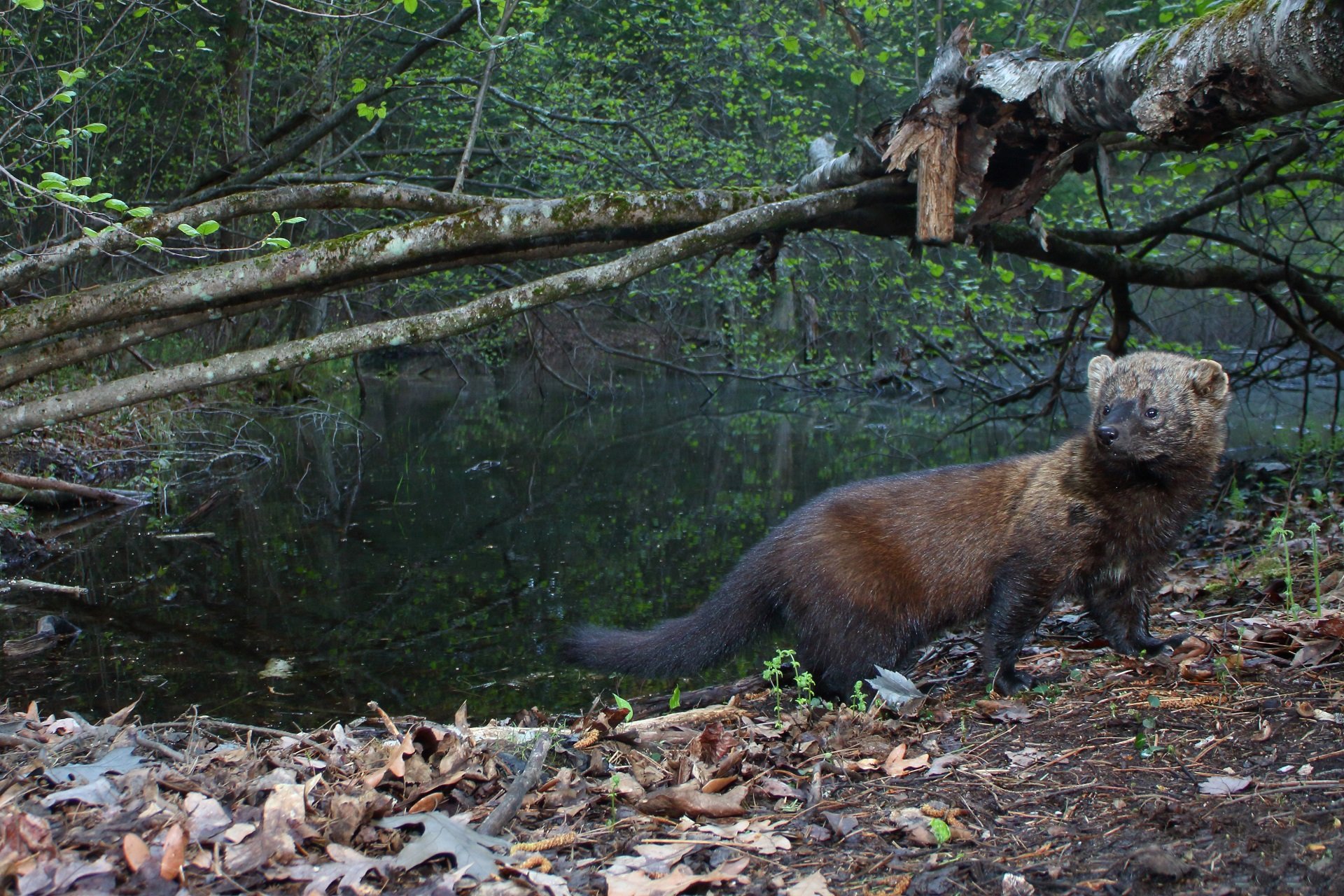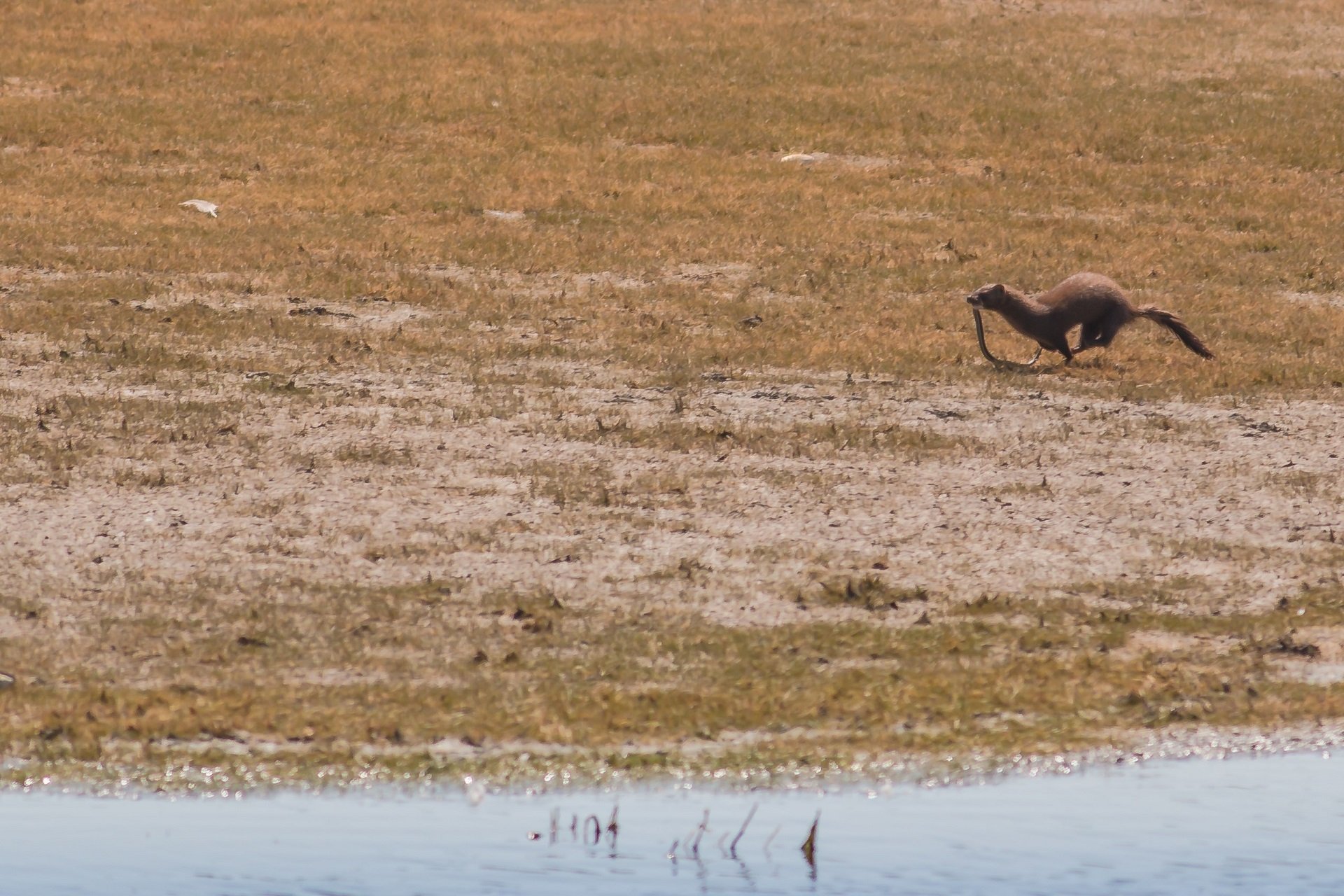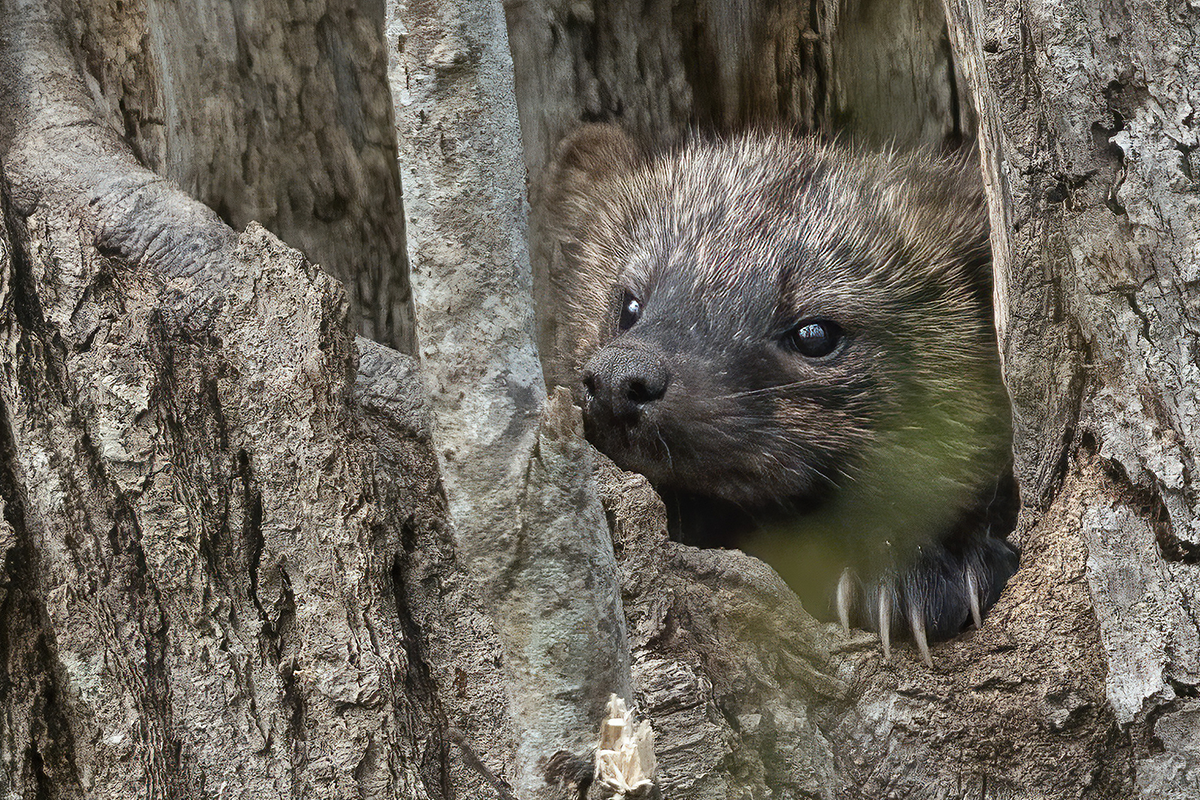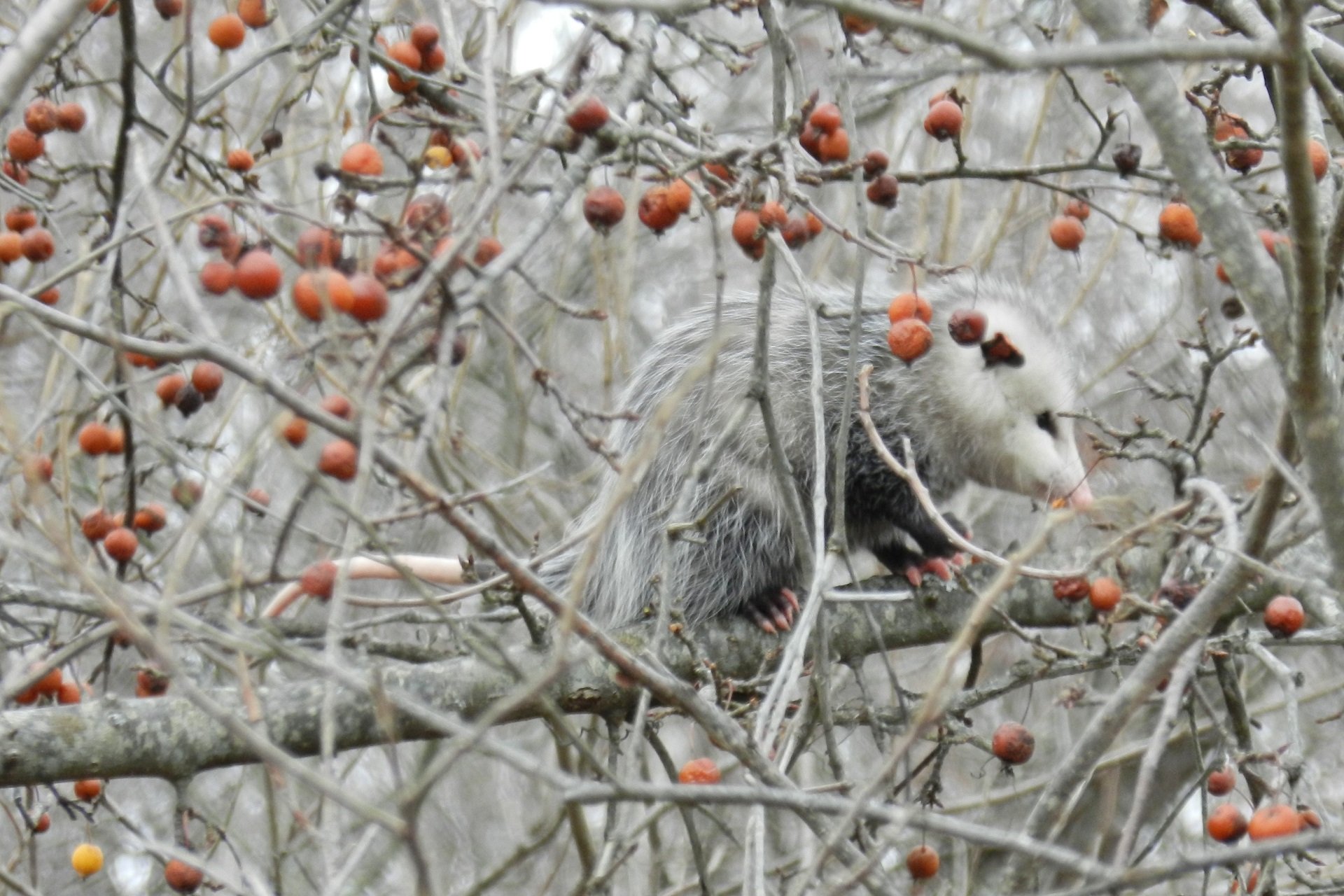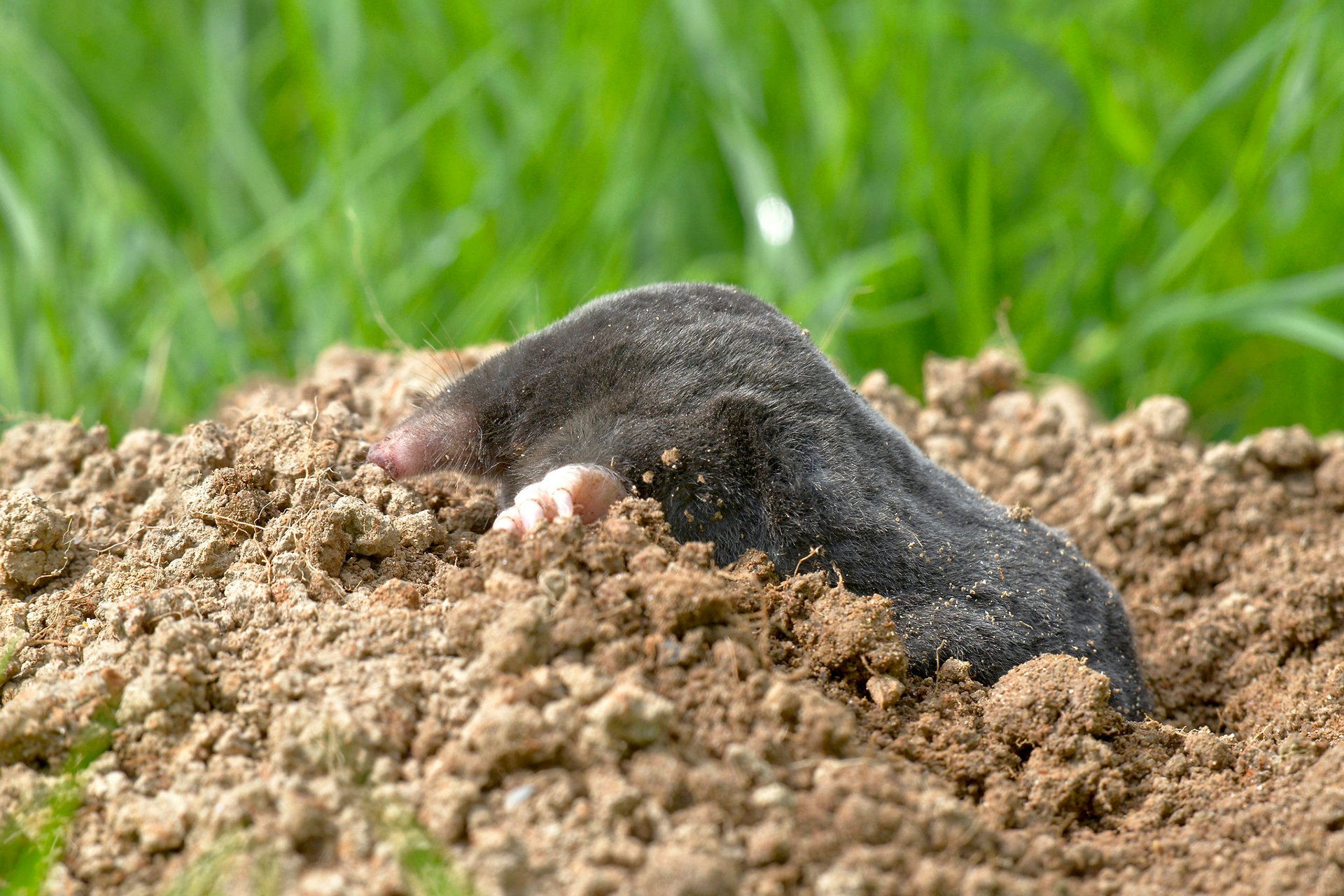Mammals in Massachusetts
Fishers
Despite commonly being called a fisher cat, a Fisher is not a cat, nor do they catch fish. Fishers are the second-largest member of the weasel family found in Massachusetts, after the North American River Otter.
How to Identify a Fisher
As with other weasels, Fishers have long, slender bodies and a low profile when moving along the ground. Their coat is dark brown, dense, and glossy. Males are typically larger than females, measuring about 3 feet and weighing up to 20 pounds.
Their tapering tail can account for one-third (12–16 inches) of its length. Retractable claws on their short, stout legs make them agile and speedy tree climbers, capable of jumping up to 7 feet between trees.
Fisher Behavior
Secretive and elusive by nature, Fishers like to keep their distance from humans. They are solitary creatures, except during their brief mating season in late winter, and are active both night and day throughout the year. Some videos and audio recordings online show loud, unearthly "screaming" sound that people have attributed to them, however, the nighttime vocalist in these videos is nearly always a Red Fox.
What Do Fishers Eat?
They use scent to locate prey, and successful hunts require silence and stealth. Although they will consume berries and fruit, Fishers are mainly carnivores and eat rabbits, snowshoe hares, squirrels, raccoons, mice, reptiles, amphibians, insects, carrion (dead or decaying animal flesh), and occasionally outdoor cats.
Fishers are one of the few mammals that prey on porcupines. Porcupines are difficult to kill, but a dead porcupine can provide many days of food and is worth the effort. While on the ground, they continually attack the only vulnerable portions of the porcupine’s body—the face and underbelly. When facial wounds have weakened the porcupine, the Fisher goes in for the kill. To avoid the quills, they’ll eat their prey starting at the head, neck, or underbelly.
Where Do Fishers Live?
You can find fishers in southern Canada, New England, New York, and scattered locations in Pennsylvania, West Virginia, and Virginia. They could potentially be found in practically every community in Massachusetts. They are forest-dwelling mammals that use various forest habitats and avoid open areas like fields and roads.
Their average home range is around 15 square miles. For males, that area is typically between 6–32 square miles. A female's home range tends to be smaller, averaging 5 square miles, and is more stable across the seasons than a male's range. Since they prefer to avoid traveling in large, open areas, Fishers opt for mixed forest habitats with heavy canopy cover. They can travel up to 18 miles in a single 24-hour period.
When Do Fishers Breed?
Breeding occurs in March or April when females are 1-2 years old. After a delay of 10 or 11 months, the earliest stage of the baby attaches to the womb, possibly due to changes in daylight. Once this attachment occurs, the baby develops in just six weeks.
Female fishers look for tree cavities with an opening large enough for the mother to enter but small enough to prevent predators that may harm her kits. Since females can mate again within just a few days after giving birth, mothers must guard the den against males looking for a mate; males do not help raise their young.
Kits are born in March with litters of 1–6 individuals. Born blind and with very little fur, the helpless kits depend on their mother for the next few months. Young Fishers begin to capture their own prey around four months and disperse by the time they are five months old.
Threats Facing Fishers
Fishers were forced out of southern New England by the 19th century. This was primarily because, during the 1700s and 1800s, loggers and farmers cleared most of the forests in the northeast and unregulated trapping was rampant. However, in the late 1800s, people began abandoning their farms for other prospects amid the industrial revolution. Over the next several decades, the forests gradually returned to the landscape and the Fishers followed.
Intentional reintroduction efforts also helped populations rebound. In the 1950s, with permission from each state, logging companies reintroduced Fishers into northern New England to control porcupines. At the time, porcupines were decimating seedlings planted by the timber companies to reestablish trees in logged areas—and Fishers were the only species that deliberately target porcupines as prey.
Today, Fisher habitats are under threat again by climate change. Without healthy, un-fragmented forests, their populations could decrease again. Other threats include mammalian-contracted diseases, such as rabies.
How Mass Audubon Supports Fishers
Mass Audubon works at our wildlife sanctuaries and beyond to ensure that the nature of Massachusetts continues to thrive. By scientifically monitoring Massachusetts wildlife, Mass Audubon informs important conservation decisions and launches targeted initiatives to help at-risk species. In addition, fostering healthy habitats, advocating for supportive policies, and educating people about the importance of nature conservation is critical to our success. Learn more about our work
How You Can Support Fishers
Mass Audubon supports animals like the Fisher every day, but we couldn’t do it without the support of our 160,000+ members.
Help us support Fishers, and animals like them, by becoming a member today.
Stay Connected
Don't miss a beat on all the ways you can get outdoors, celebrate nature, and get involved.



